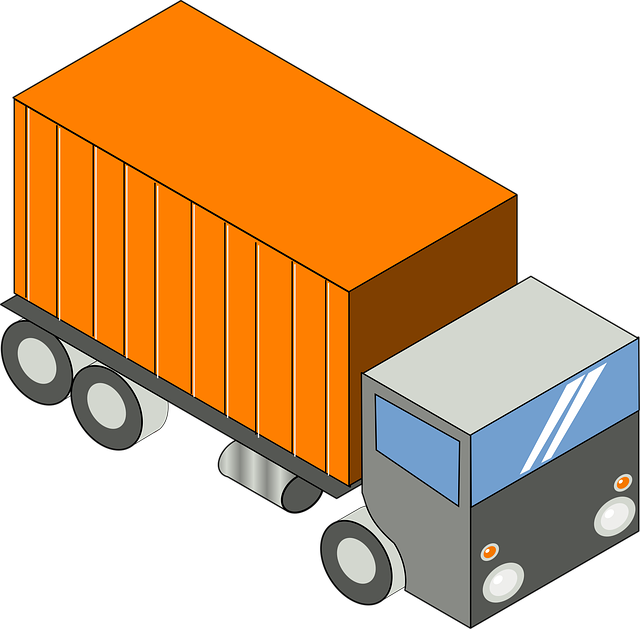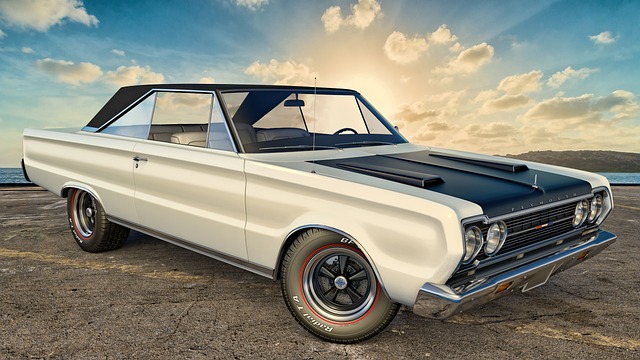Looking to register your car in California? This comprehensive guide will walk you through the process, ensuring a smooth transition. From understanding the essential requirements for registration to gathering all necessary documents, this step-by-step approach covers it all. Learn how to perform a crucial dmv VIN verification, complete your application online or in-person, and pay fees—all leading up to obtaining your new license plate.
- Understand Requirements for Registration
- Gather Necessary Documents
- Perform DMV VIN Verification
- Complete Online or In-Person Application
- Pay Registration Fees and Obtain License Plate
Understand Requirements for Registration

Before diving into the registration process, it’s crucial to understand the requirements set by the California Department of Motor Vehicles (DMV). To register your vehicle, you’ll need several essential documents and will be required to pass a vehicle inspection, including a DMV VIN verification. This process ensures that all cars on California’s roads meet safety standards.
A key step in this process is obtaining a valid vehicle identification number (VIN) inspection. Traditionally, this has been done at a stationary location, but with the advent of technology, you can also leverage mobile VIN verification services. These services allow for convenient and efficient VIN inspections right from your smartphone or other mobile device, further streamlining the registration experience in California.
Gather Necessary Documents

Before you begin the registration process for your car in California, make sure to gather all the essential documents. The California Department of Motor Vehicles (DMV) requires specific paperwork to ensure a smooth and lawful transaction. One crucial document is the Vehicle Identification Number (VIN) verification report. This can be obtained through a mobile VIN verifier or by scheduling a mobile VIN inspection, which involves a professional visiting you to confirm the vehicle’s details.
Additionally, you’ll need your vehicle’s registration from its previous state (if it was registered elsewhere), proof of insurance, and perhaps even records of any recent repairs or maintenance work. It’s important to double-check the DMV’s official list of requirements, as they may have specific guidelines for different types of vehicles, especially when it comes to unique or classic cars.
Perform DMV VIN Verification

Before registering your car in California, it’s crucial to undergo a DMV VIN (Vehicle Identification Number) verification process. This step is essential for ensuring that the vehicle you’re planning to register is legitimate and has not been reported stolen or has any outstanding issues. You can perform this verification at any California Department of Motor Vehicles (DMV) office by bringing along the necessary documents, including proof of ownership and identification.
One convenient option available in today’s digital era is a mobile VIN inspection or verification service. These services allow you to get the process done quickly without having to visit a DMV branch. Through these mobile services, a professional will come to your location and perform a thorough VIN inspection, providing you with all the necessary information for registration. This not only saves time but also adds an extra layer of convenience, especially if you’re busy or have limited mobility.
Complete Online or In-Person Application

You can start the car registration process in California by completing an application, either online or in-person at a DMV office. For your convenience, the California Department of Motor Vehicles (DMV) offers both options. If you choose to apply online, visit the official DMV website and follow the step-by-step instructions to submit your information and upload necessary documents. Ensure that all details are accurate, including your vehicle’s make, model, year, and unique Vehicle Identification Number (VIN). The VIN is a critical piece of data used for verification purposes; thus, it’s crucial to input it correctly during this stage.
Alternatively, if you prefer an in-person approach, head to your nearest DMV office with your documents and vehicle. An agent will assist you in filling out the application form, which requires personal information and details about your car, including its VIN. The DMV agent will then conduct a vin inspection to verify the vehicle’s identity and ensure it complies with California’s registration standards. Once your application is approved, you’ll receive your registration documents, making your car officially registered and ready for road use.
Pay Registration Fees and Obtain License Plate

After completing the registration application and passing the vehicle inspection, it’s time to settle the fees. The California Department of Motor Vehicles (DMV) charges a standard registration fee that covers your vehicle’s weight class. Additional fees may apply for specialized vehicles or if you opt for additional services like extended warranty coverage. Once all fees are paid, you’ll receive your registration documents and can proceed to obtain license plates.
The DMV offers several ways to get license plates. You can visit a local DMV office and request them in-person, which is often the fastest method. Alternatively, some counties in California provide mobile vin inspection and verification services, allowing you to have plates installed at your convenience. These services streamline the process, especially if you’ve recently purchased a used car or need replacement plates quickly. Ensure that your license plates are displayed correctly on your vehicle for legal compliance and to avoid any issues with future dmv vin verifications.
Registering a car in California involves understanding the requirements, gathering essential documents, completing an application, and paying fees. By following these steps, from fulfilling the DMV VIN verification to securing your license plate, you’ll ensure your vehicle is legally registered and ready for California’s roads.



